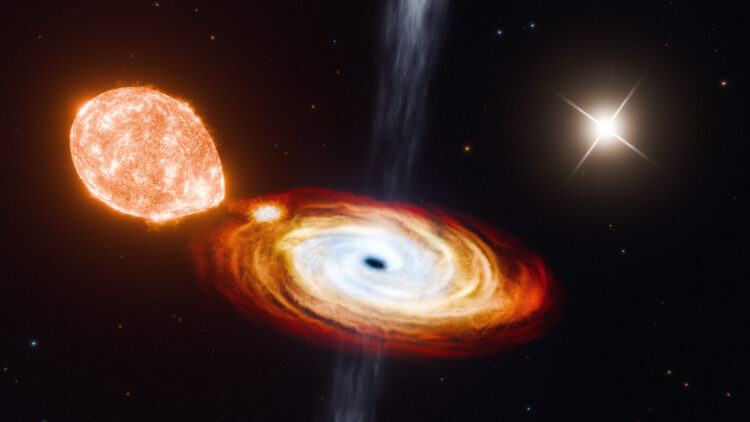Recent astronomical discoveries have provided fresh insights into black holes, their formation, and their possible effects on the universe, including Earth. In particular, researchers have identified a unique black hole triple system that challenges established theories about how these cosmic behemoths form. By closely examining this phenomenon, it could alter our understanding of stellar evolution and the dynamics of celestial bodies.
How this distinct black hole triple system was discovered
Scientists from MIT and Caltech have made an amazing discovery of a black hole system known as V404 Cygni, which is located approximately 8,000 light years from Earth.
Unlike typical binary systems, however, V404 Cygni features a black hole accompanied by two stars: one star orbits the black hole every 6.5 days, while the second star—which is much more distant—takes about 70,000 Earth years to complete its orbit. The revelation hints at a more complex relationship between black holes and their surrounding environments than previously believed.
The research team stumbled upon this unusual configuration while analyzing astronomical data from Aladin Lite, a database aggregating astronomical observations from various telescopes. Lead researcher Kevin Burdge noticed two distinct light blobs in the images—one corresponding to the black hole and its nearby star, and the other revealing the distant star’s presence.
The considerable distance separating the stars prompted questions about their gravitational relationship, leading the team to suspect that they belong to a single system.
This discovery has got scientists rethinking black hole formation
Black holes are generally thought to form from the violent collapse of massive stars following a supernova explosion. This process theoretically expels nearby objects due to the tremendous amount of energy released.
However, the existence of the distant star in the V404 Cygni system contradicts this notion, suggesting that the black hole might have formed through a gentler process called “direct collapse.” In this scenario, a star collapses into the black hole without experiencing a catastrophic explosion, allowing loosely bound objects to remain intact.
To explore this further, Burdge carried out simulations to determine how this triple system could have formed. He tested several scenarios, including supernovae and direct collapses, to identify which scenario most accurately explained the current configuration of the stars.
The findings strongly indicated that direct collapse was the most plausible explanation, supporting the idea that not all black holes originate from violent explosions.
Implications for stellar evolution
This discovery isn’t just significant for understanding black hole formation; it also sheds light on the age of the V404 Cygni system. The outer star, currently transitioning into a red giant, is estimated to be about four billion years old.
Since stars in the same region typically form around the same time, this implies that the entire black hole triple system likely shares this age, providing a rare glimpse into the life cycle of black holes.
Burdge emphasized the importance of their findings, stating, “This system is super exciting for black hole evolution, and it also raises questions of whether there are more triples out there.”
The research team now plans to use advanced instruments—such as the GRAVITY instrument on the ESA’s Very Large Telescope—to further explore the dynamics of this intriguing system.
The discovery of the V404 Cygni black hole triple system not only challenges established theories surrounding black hole formation but also enriches our understanding of the universe’s intricacies. As researchers delve further into these phenomena, the ramifications of such findings could transform our knowledge of stellar evolution and the gravitational dynamics governing celestial bodies. With more discoveries on the horizon, the cosmos hints that even more surprises lie in wait.

